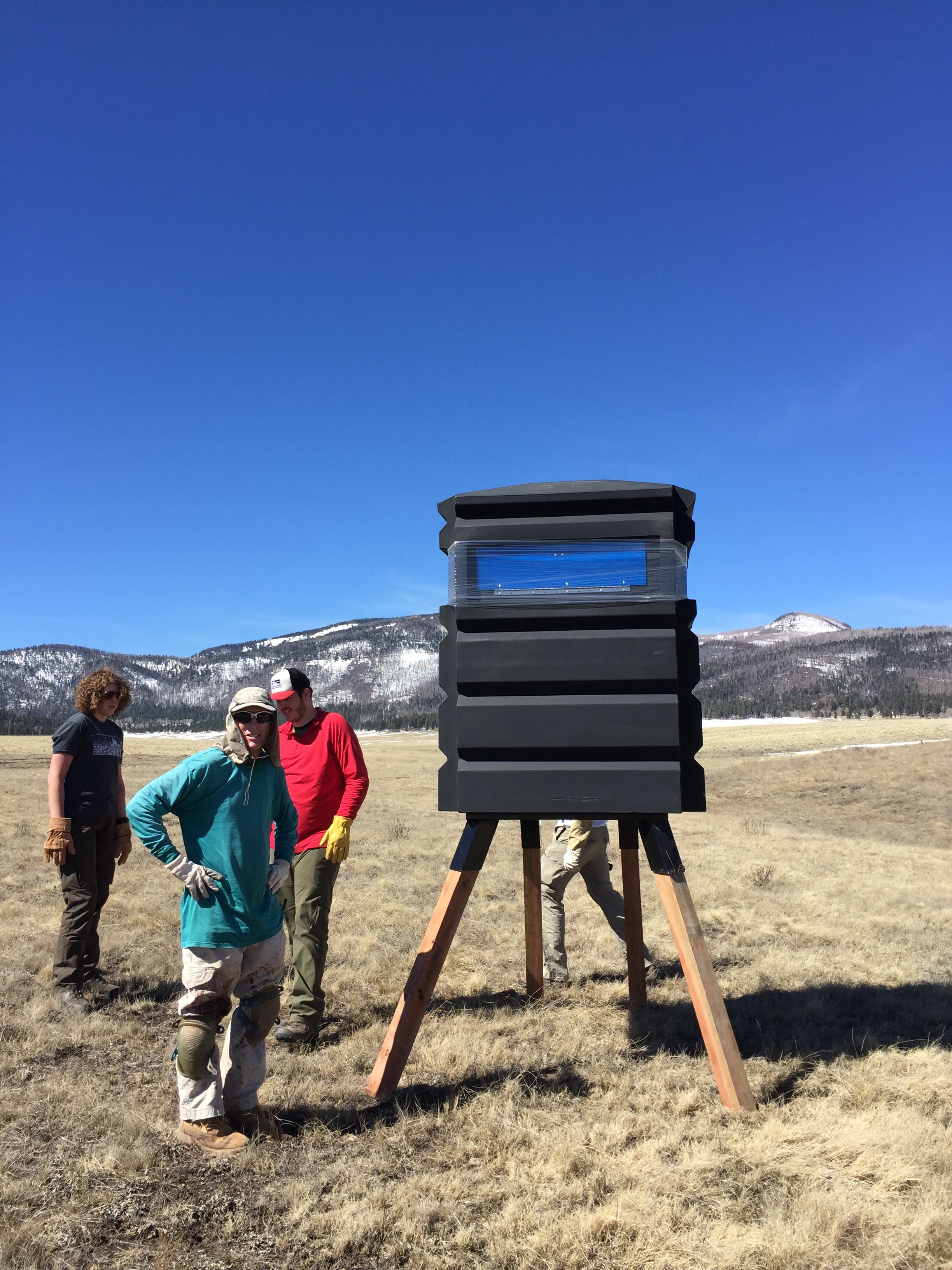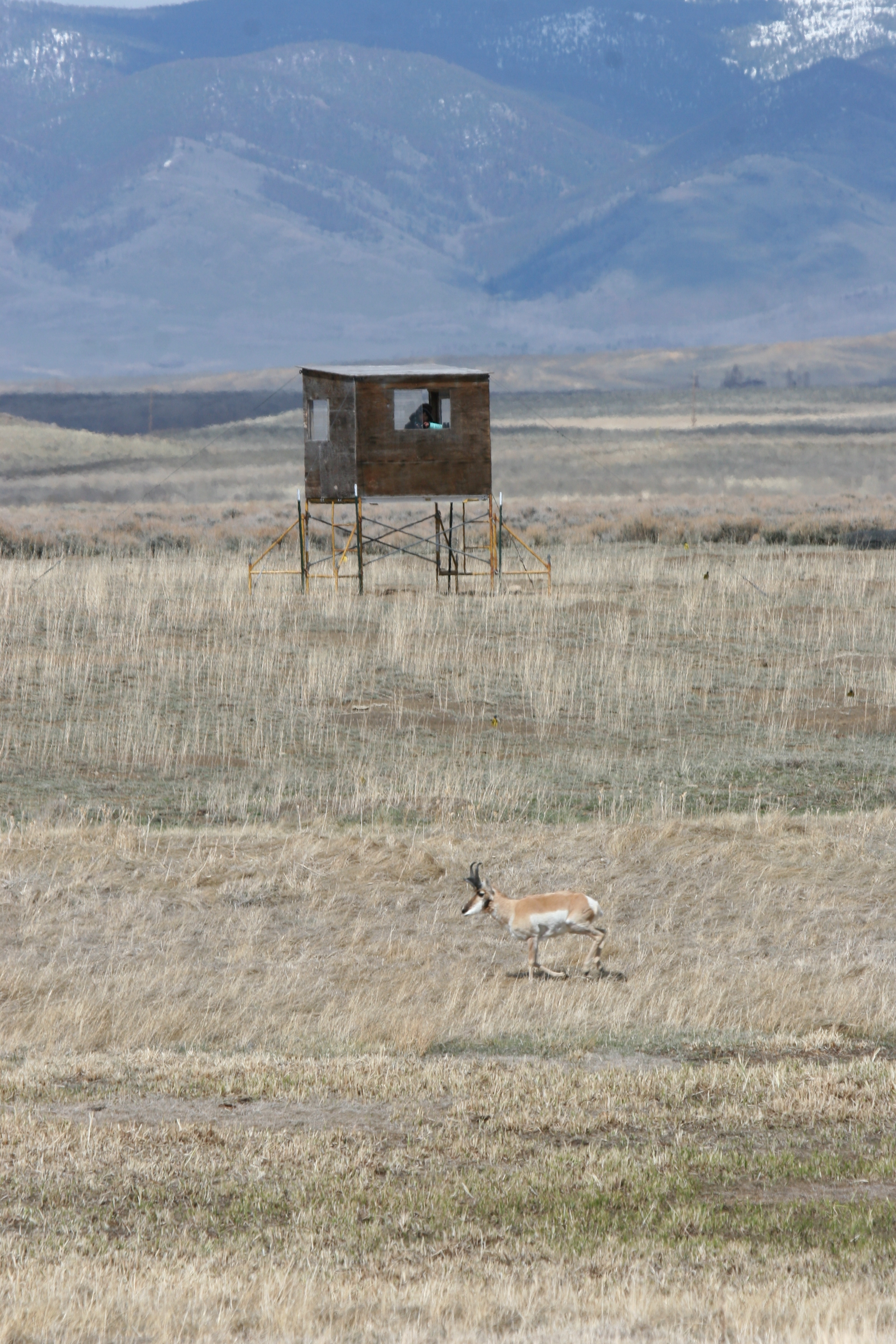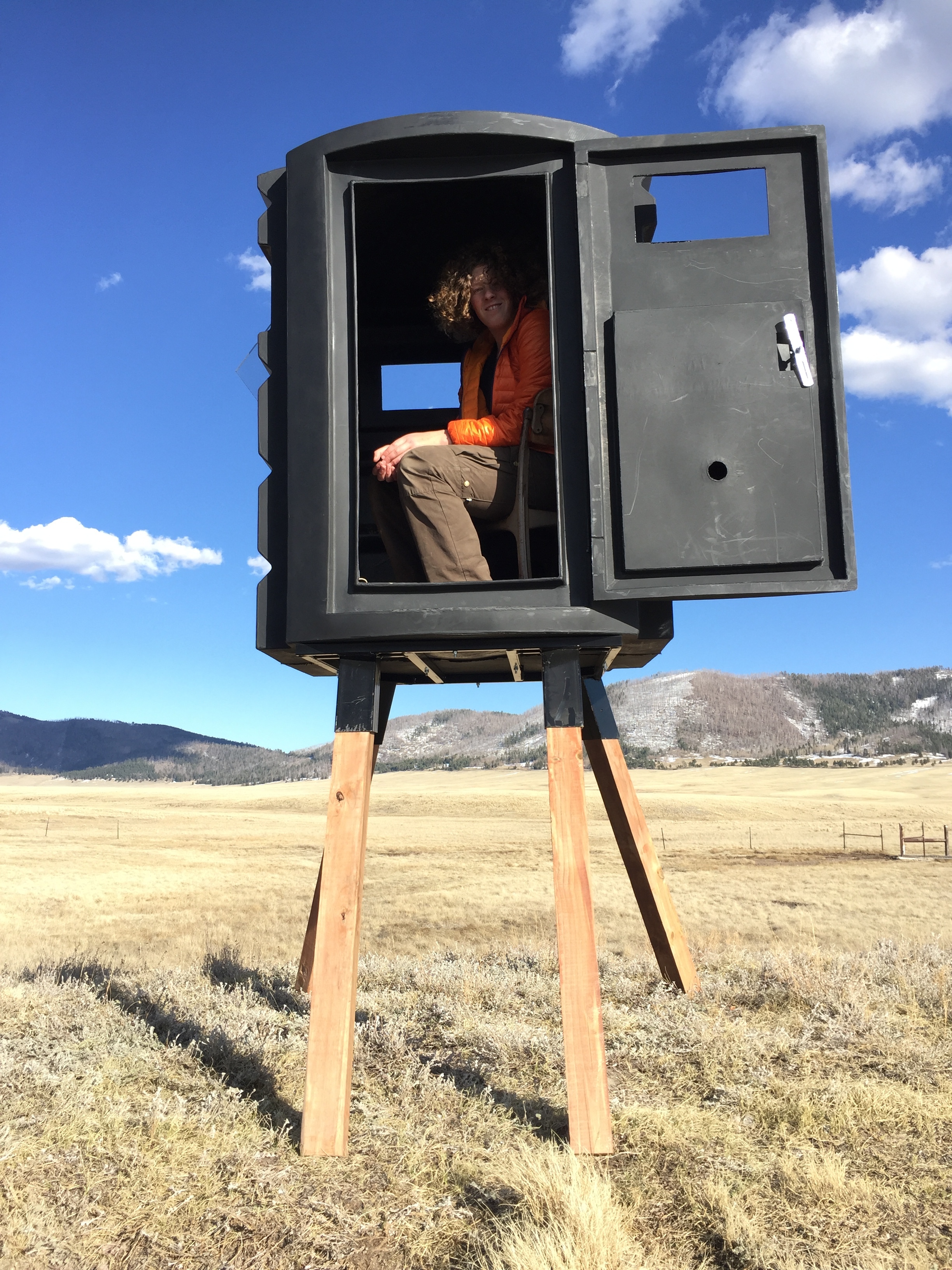THE RESEARCH TEAM
John hoogland
principal investigator
John is a research professor with the Appalachian Laboratory of the University of Maryland Center for Environmental Science in Frostburg, MD. As a behavioral ecologist, John has dedicated his career to understanding the complex societies of prairie dog populations.
Academic Positions
1997-present: Professor, University of Maryland, Center for Environmental Science, Appalachian Laboratory
1987-1997: Associate Professor, University of Maryland
1985-1986: Assistant Professor, University of Maryland
1979-1985: Assistant Professor, Princeton University
1977-1979: National Science Foundation Postdoctoral Fellow, University of Minnesota
Degrees
Ph.D. in Zoology, University of Michigan, 1977
B.S. in Zoology, University of Michigan, 1971
The World's Prairie Dog Expert
You would be hard pressed to find a person who has spent more man-hours with prairie dogs in the field than John Hoogland, behavioral ecologist and renowned authority on this iconic North American rodent. On this animal, John has amassed an encyclopedia of knowledge, and has gained an understanding of the prairie dog that could only be achieved through an immersive, no-compromises methodology that places him in an observation tower directly in the prairie dog’s world for five months out of every year.
A day’s work in the field begins before his study subjects have risen with the sun, and comes to a close at dusk, only when the last lingering prairie dog feels satisfied with the day’s work and retires to his underground burrow for the night. Through long daily hours while the prairie dogs are aboveground and active, John is in his observation tower recording interactions, tirelessly collecting the information he needs to answer his research questions. Consistent. Yet full of surprises. Every day is different, every season is different, and every prairie dog has her unique way of fulfilling her purpose in the colony, the meadow, the ecosystem. Not a season with the prairie dogs goes by that doesn’t pique John’s interest, whether presenting him with an unexpected behavior, a long-sought-after answer, or, inevitably, more questions. John began studying prairie dogs as a young graduate student in the mid-1970s, and through these 44 years, his work has continued to be as exciting and as relevant as it was when he began.
John has had many offices in his career, moving his nomadic collection of equipment to and from locations in Wyoming, Colorado, South Dakota, Utah, Arizona, and New Mexico to study four of the five extant prairie dog species: the black-tailed, white-tailed, Utah, and Gunnison’s, with the only species eluding him the isolated Mexican prairie dog in north-central Mexico. John’s research sites have taken him to some of the most beautiful open landscapes in the United States: the Wind Cave, Petrified Forest, and Bryce Canyon National Parks, the Arapaho National Wildlife Refuge, and the Valles Caldera National Preserve. Joined by a new group of field assistants every year – some undergraduate students, some young professionals – affectionately called his Prairie Dog Squad, John begins the annual research season at first snow-melt in the early spring and ends it after the emergence of offspring in the summer. And in the fall he returns to his research site for a short period to re-mark his in-molt study subjects (a markathon, as he calls it) before the winter. This kind of in-the-field time has been a privilege afforded to him by the Appalachian Laboratory of the University of Maryland Center for Environmental Science in Frostburg, MD, where you will find John in the off-season taking a break from field work so that he can analyze data, commit to his writing, and tend to the equally-essential aspects of scientific research from behind his desk.
It has been a long and fulfilling journey for John. Though he has cemented quite the legacy as a behavioral ecologist, he is also a husband and father, and credits his ever-supportive family – wife Judy and their four children – for helping him to pursue his calling in the field, to dedicate half a year of every year to those long hours with the prairie dogs – consecutive days of nonstop work. Over the decades, John's family has joined him in his semi-nomadic life, traveling across the country to new grassland locales, joining him as field assistants, waiting for him to come home for late-night dinners, and supporting his scientific curiosity.
A field researcher is a scientist and a naturalist, and John has been a passionate advocate for an animal often misunderstood and sometimes persecuted in an inexorably human-dominated landscape. In part for scientific curiosity, in part for the invaluable contributions to the wildlife field, in part for the thrill of unraveling the mysteries of a conspicuous but secretive animal, but in no less part in simple defense of the oft-maligned prairie dog, John has dedicated his life to proving and supporting the essential, irreplaceable role these animals play in the sensitive ecosystems of the American west.
John has amassed a library of knowledge from his many years with the prairie dog, quite literally. His writings amount to more than 70 scientific publications and two books, with his magnum opus in the works. Of his research have been over 5,000 citations to his publications; dozens of features in national and international journals and programs (print, radio, and television) from public programming to National Geographic to the BBC; and mentions in numerous textbooks. Having proven himself an expert on prairie dog behavior, John has reviewed and consulted in numerous scientific and natural history journals. In short, he is the man to go to for all things prairie dog.
To learn more about the origins of the prairie dog project and why John began studying these species, visit our STUDY HISTORY page.
The Prairie Dog Squad
field assistants
Over 200 research assistants have assisted John over his four decades of research. Many of these prairie dog squad alumni have gone on to graduate studies and careers in biological research. Every spring John has anywhere from 2 to 5 students and/or young researchers in the field with him, and every fall a group of 3-4 joins him for his markathons. The crew works hard to collect targeted data for John's research questions, collectively putting in up to 1000 hours or more in the field every season. John loves to give young scientists the opportunity to work with him, to gain experience in data collection, to fall in love with prairie dogs as he has, and to delve into the many facets of behavioral ecology research.
Making up the team for 2017 are John of course, Mariana doing photography, and new Squaddies Katie, Marlin, Patrick, Carly, Dennis, and Jimmy. Here's what they had to say about their time on the project:
"I've always loved science, nature, and animals. In particular, I love watching animals behave. When you study them and their behavior you learn that they all have their own personalities and they become more than just "animals" to you. Additionally, all of the threats to wildlife populations can be traced back to humans. I want to work to mitigate those threats." - Marlin Dart, PD Squad 2017
"I’ve always wanted to get into either wildlife research or conservation work, and I knew that I would need some hands-on experience in addition to what you get in the classroom. This project in particular seemed appealing because it was for a fairly long period of time, it was relatively close to home, and it seemed like there were good results coming out of it. Additionally, I’d grown up for most of my life hearing about conservation efforts for the black-footed ferret, so I thought it would be really interesting to study the life and reproduction of their primary food source. I feel like that’s slightly insulting to the prairie dogs, but after being here, I’ve realized that they’re quite interesting in their own right...I’ve always just been really interested in animals; I never really considered anything else. I remember kind of hating that in every book I read, everything seemed like it was going extinct, and I wanted to try and help fix that." - Katie Collier, PD Squad 2017
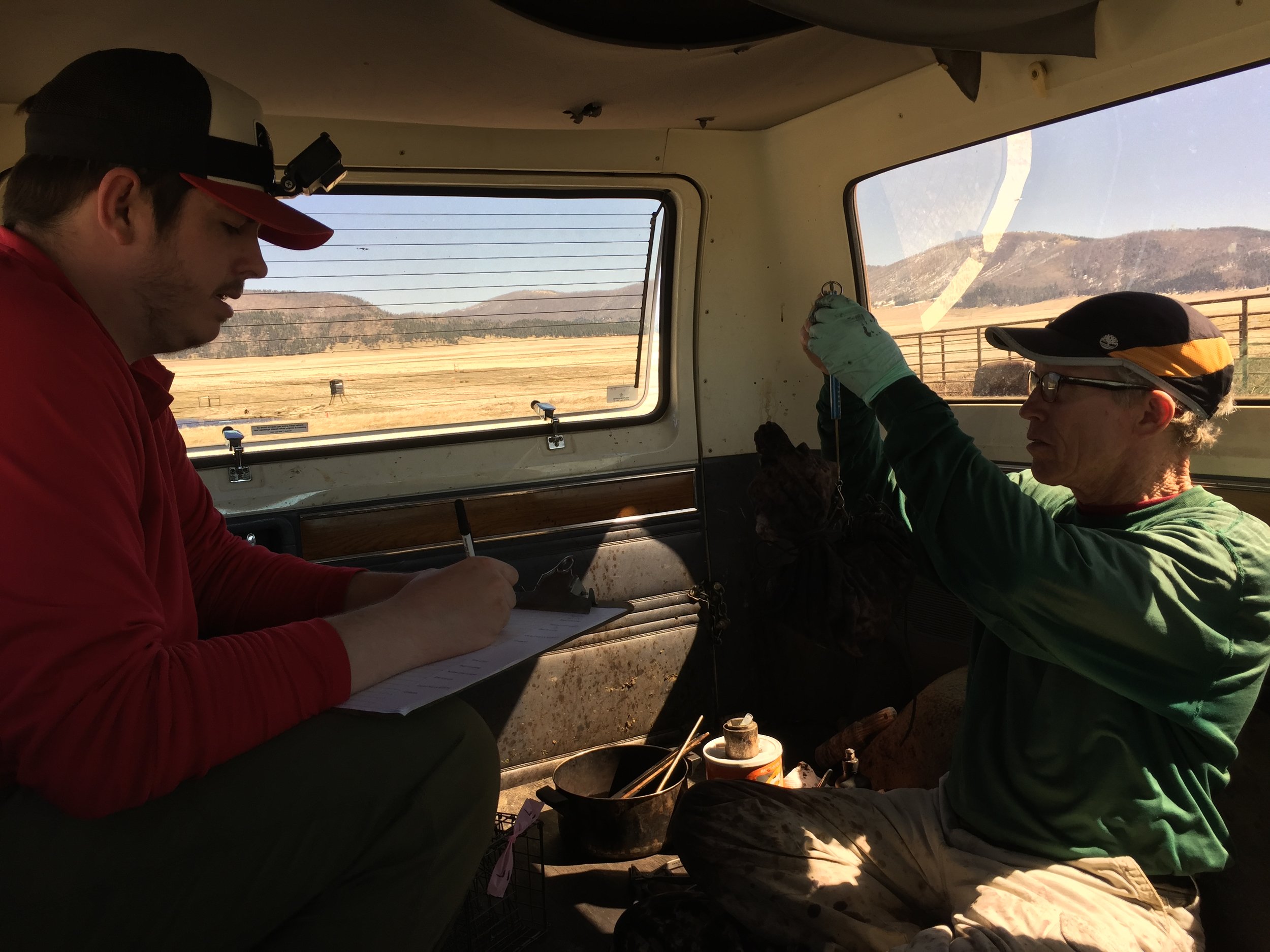
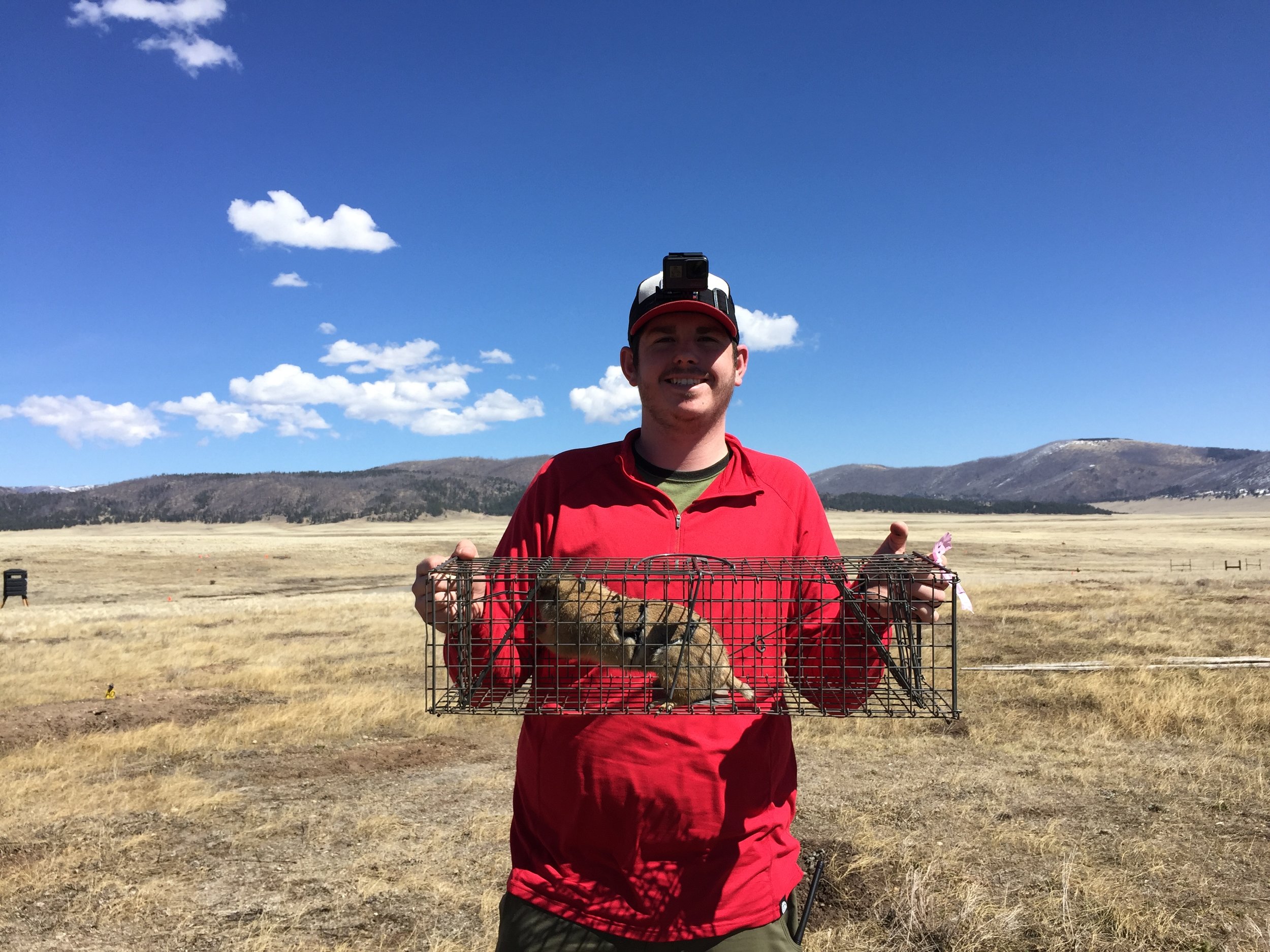
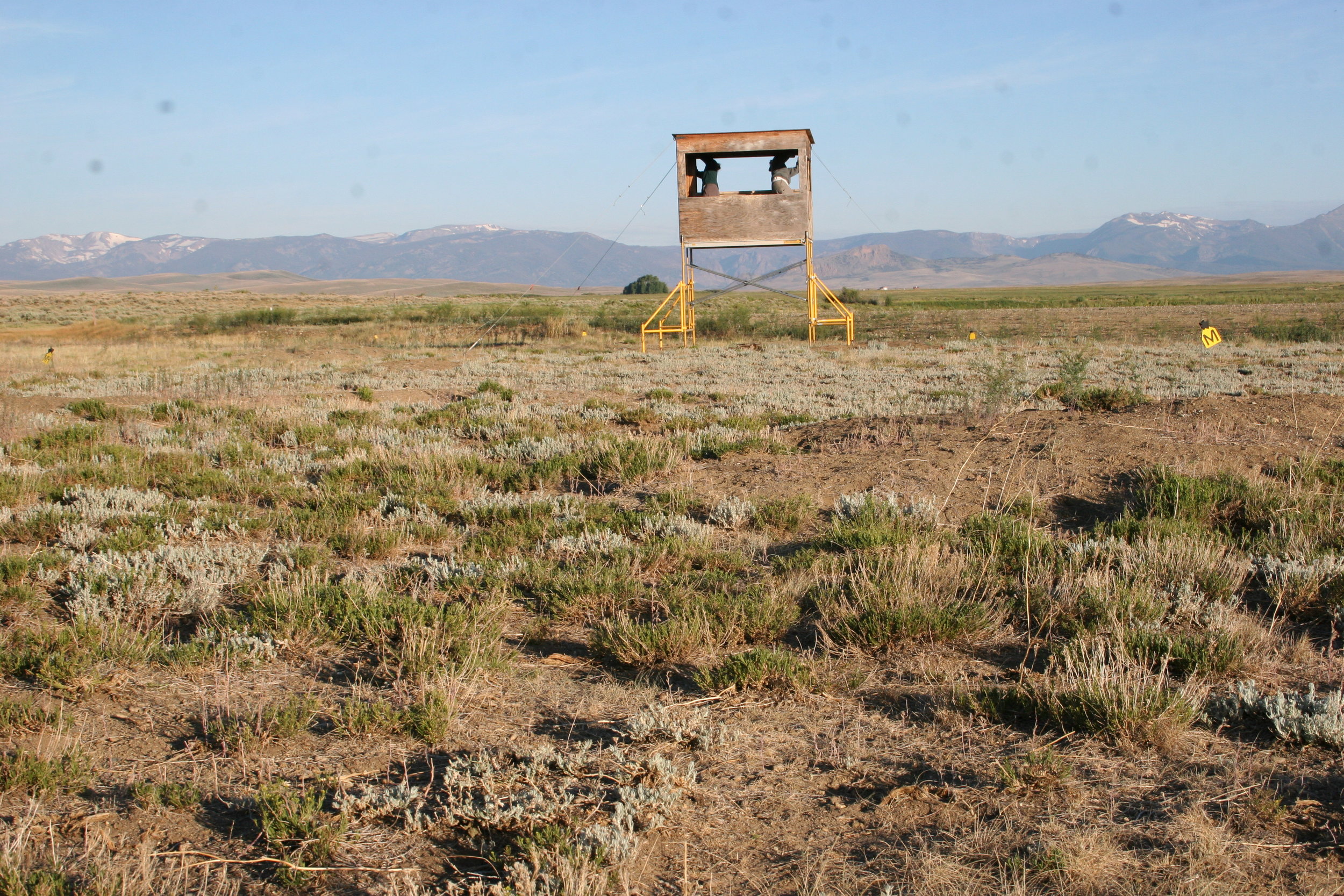

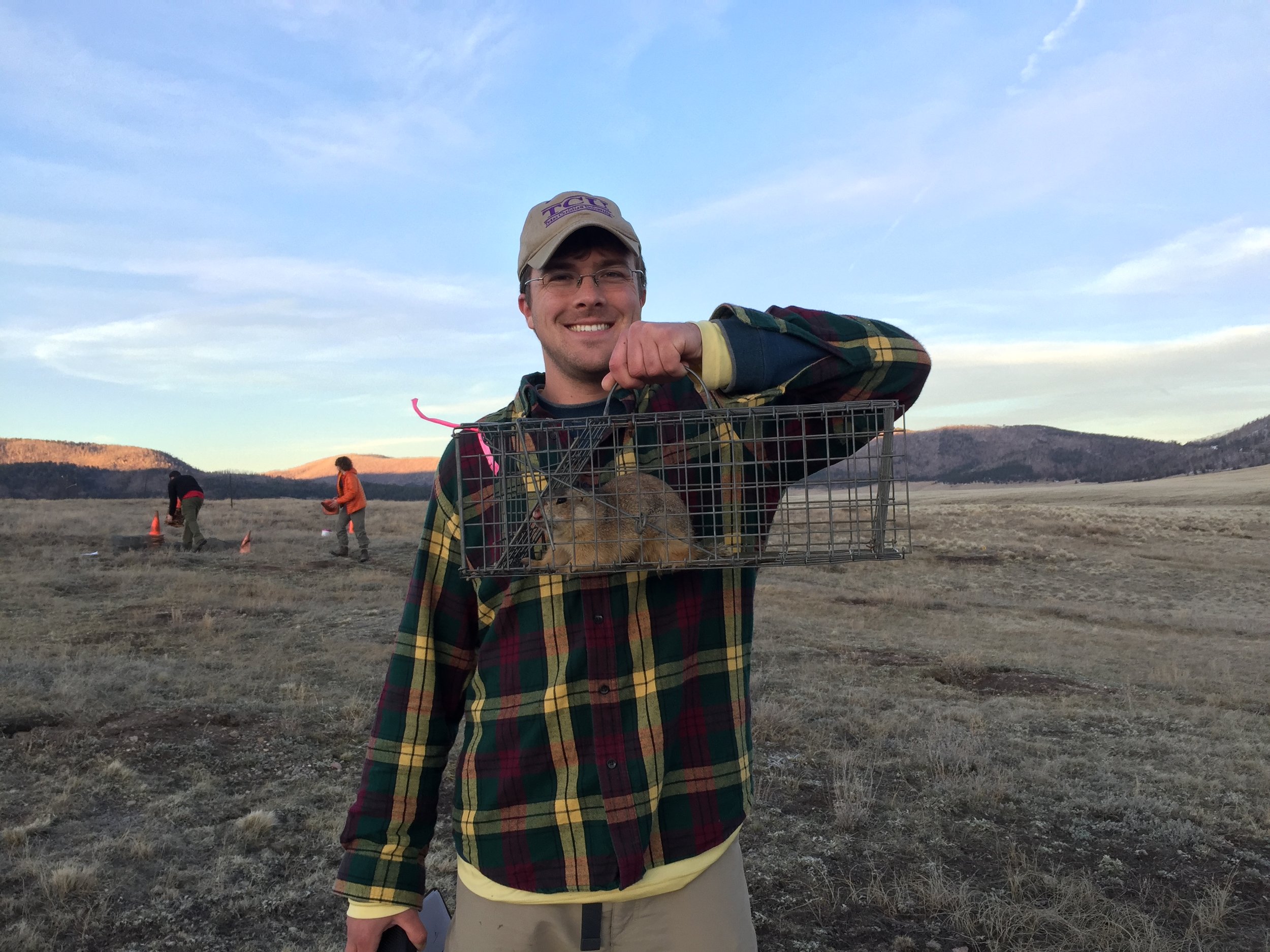
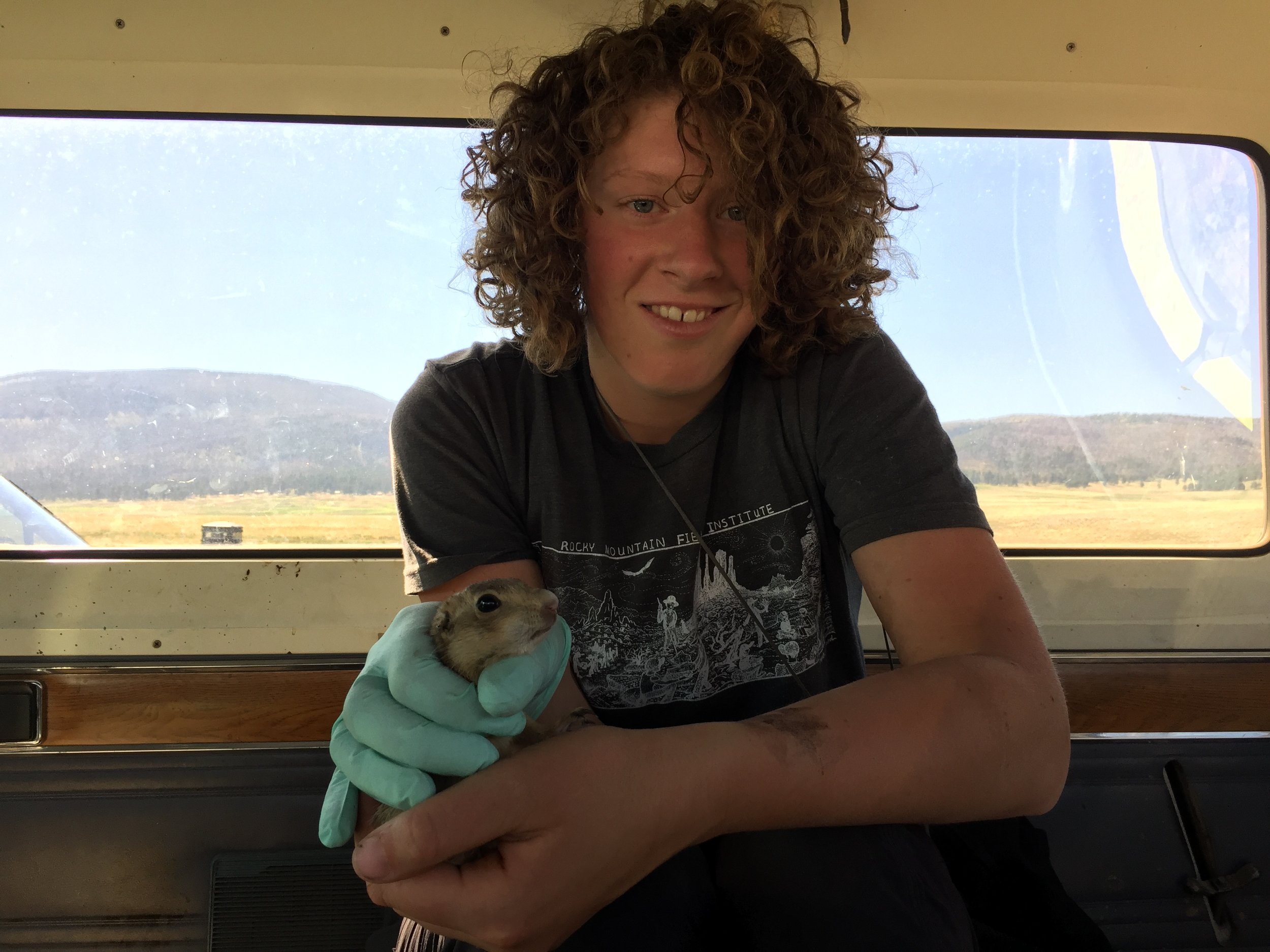
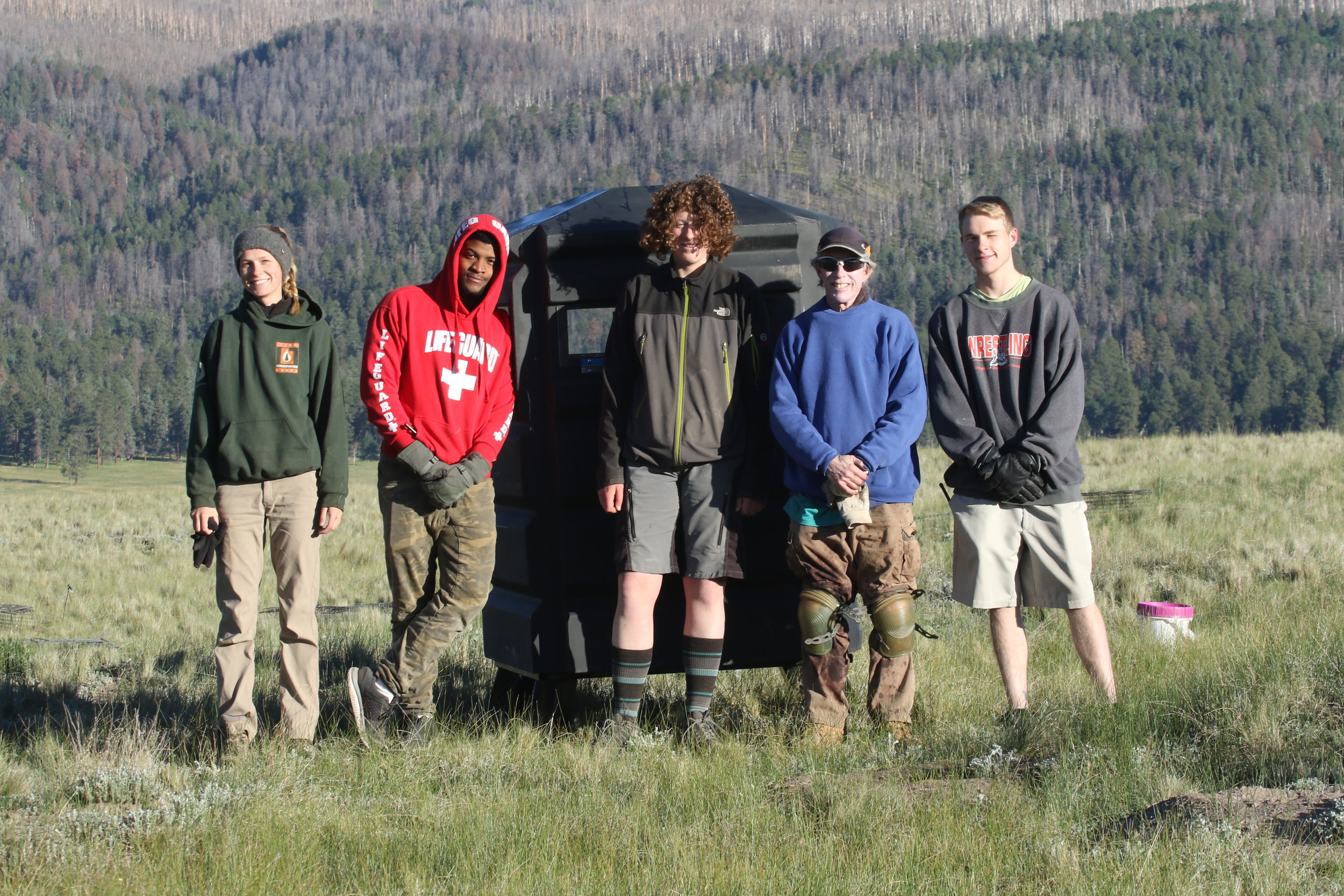
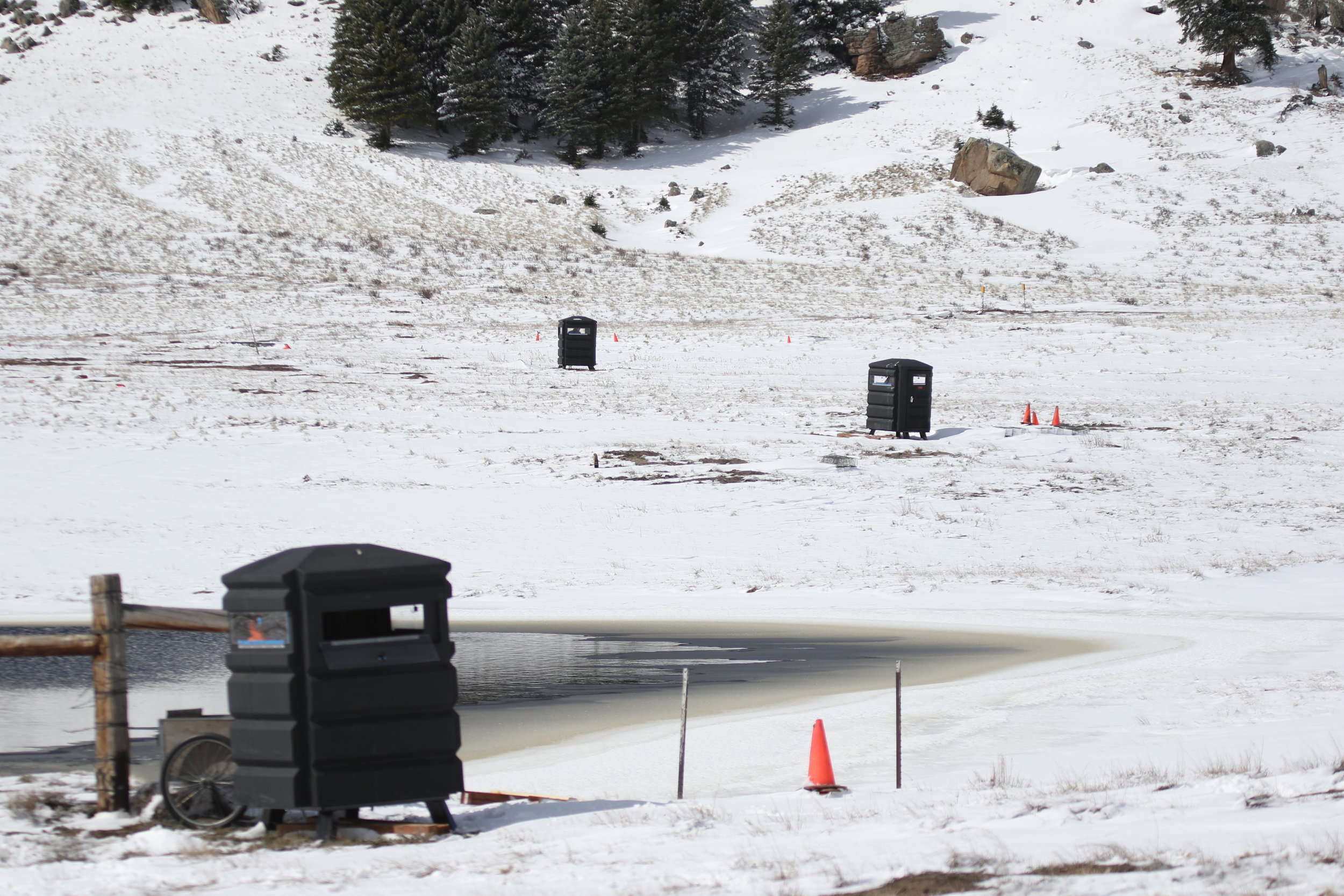

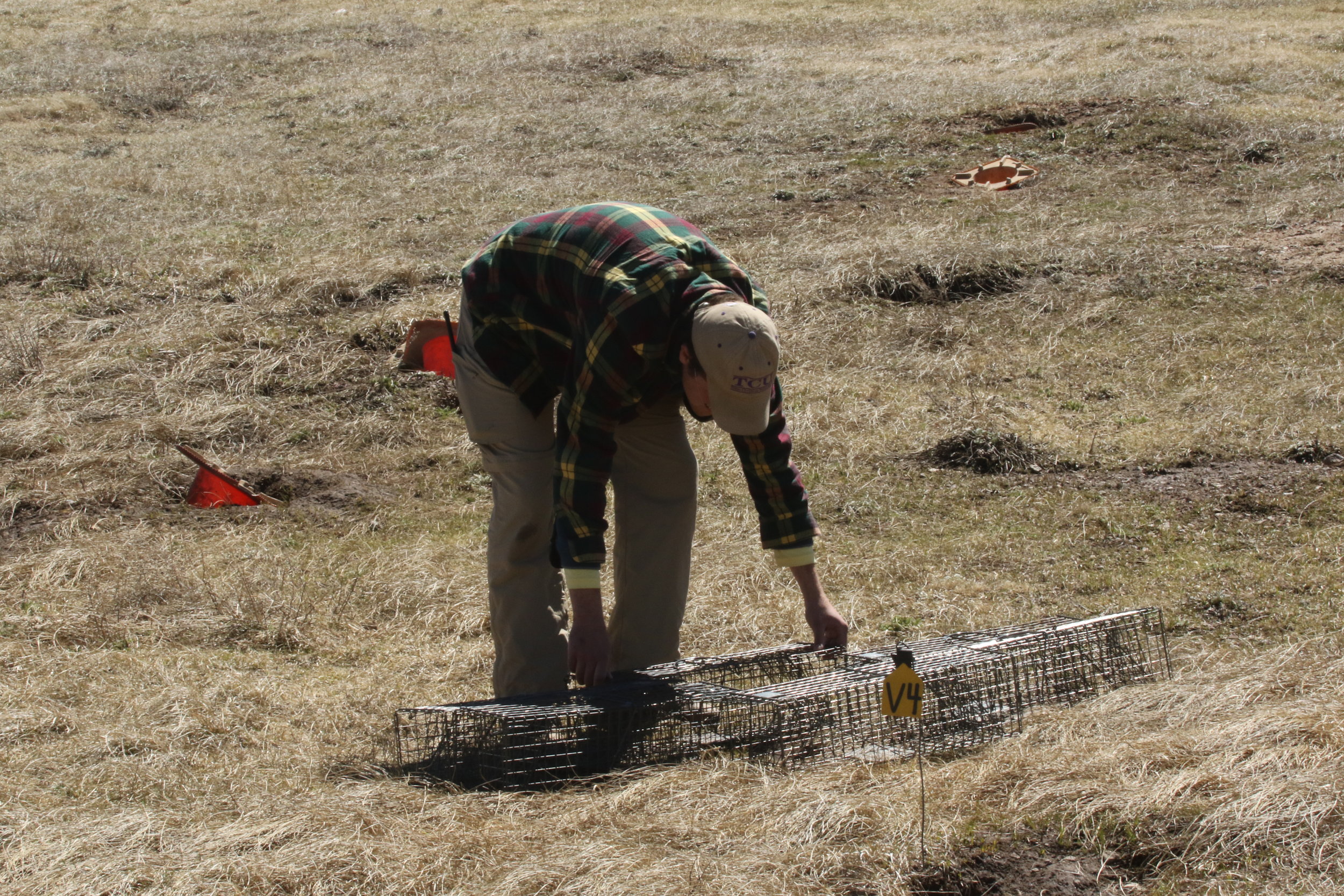
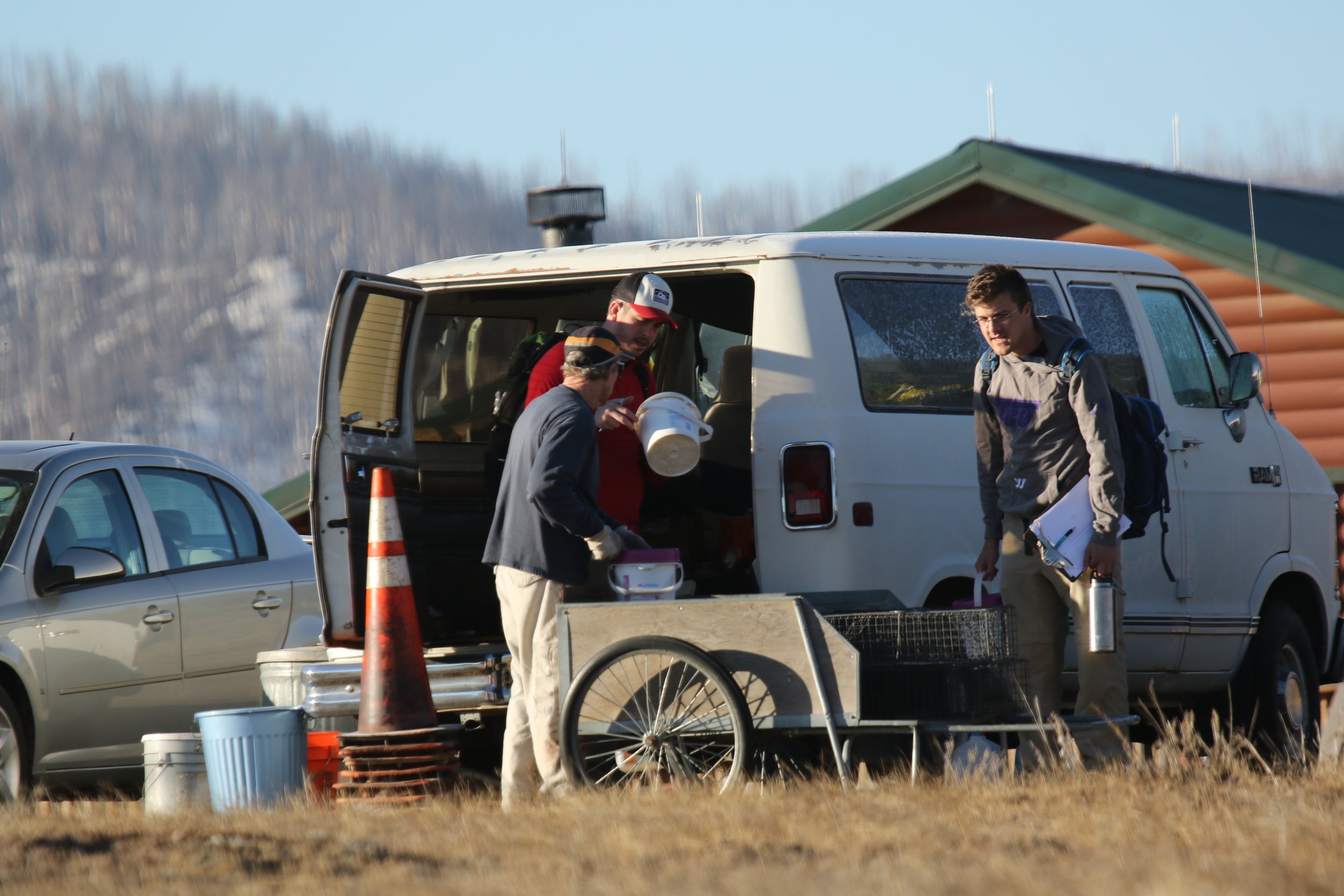


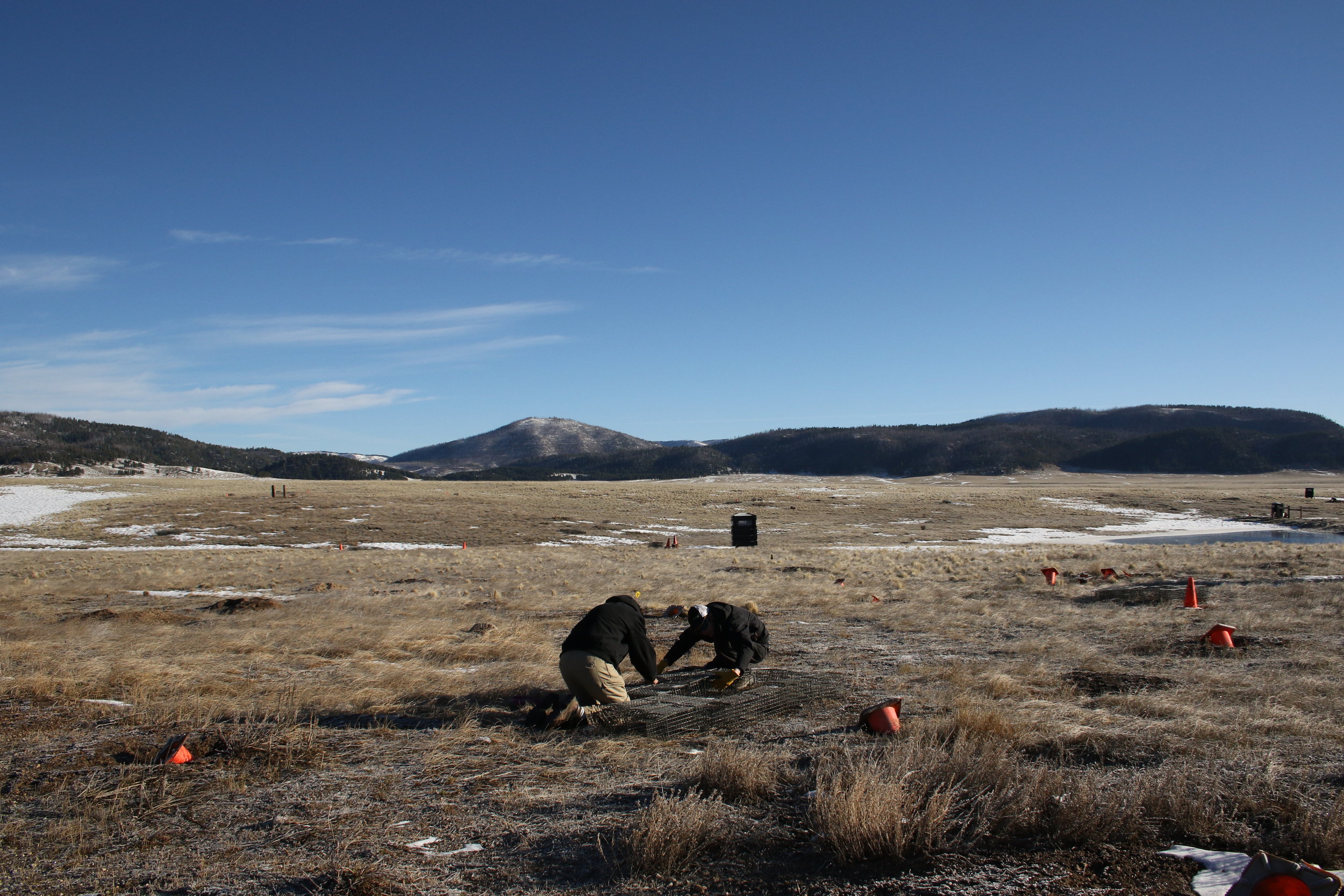
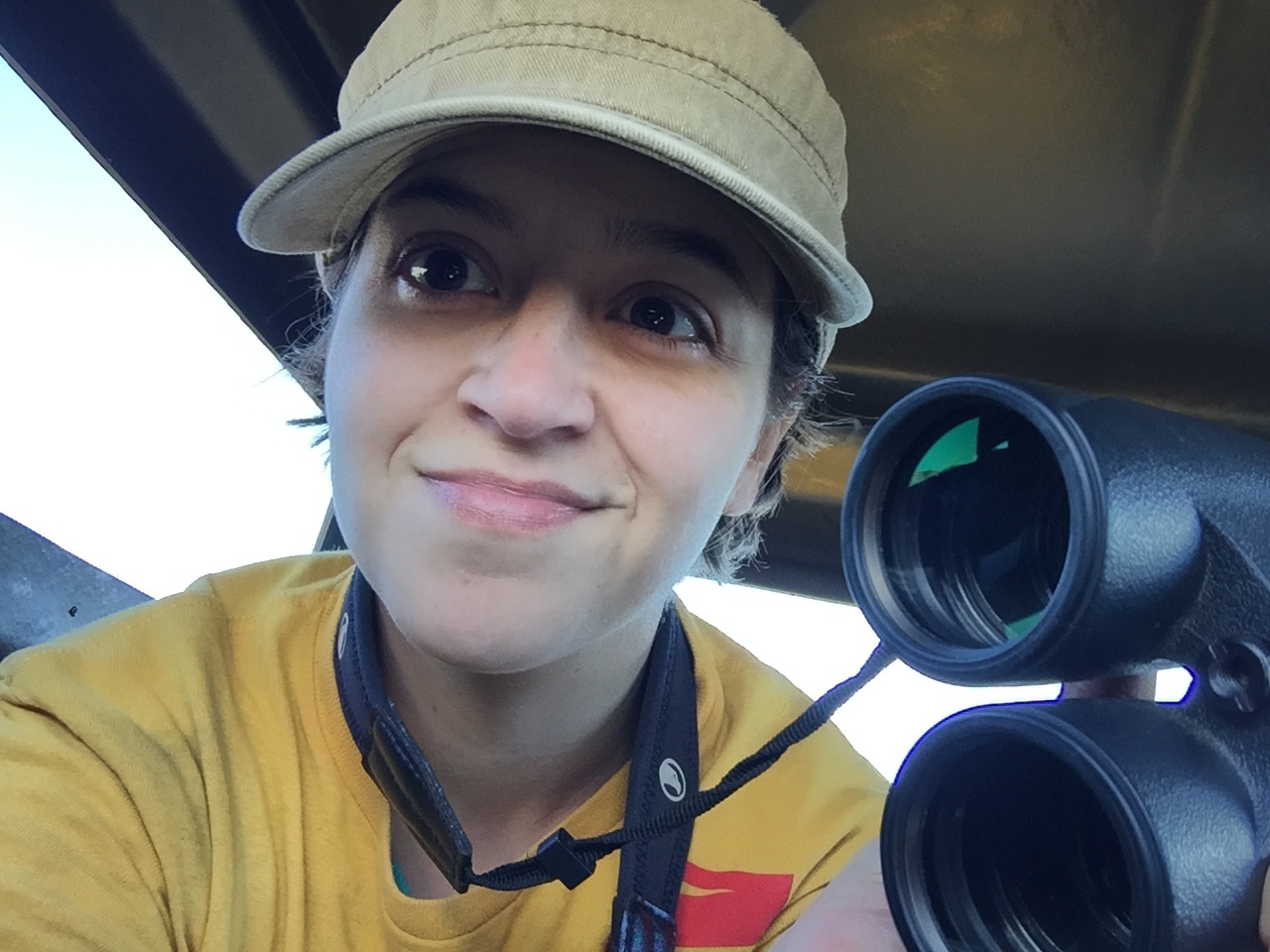
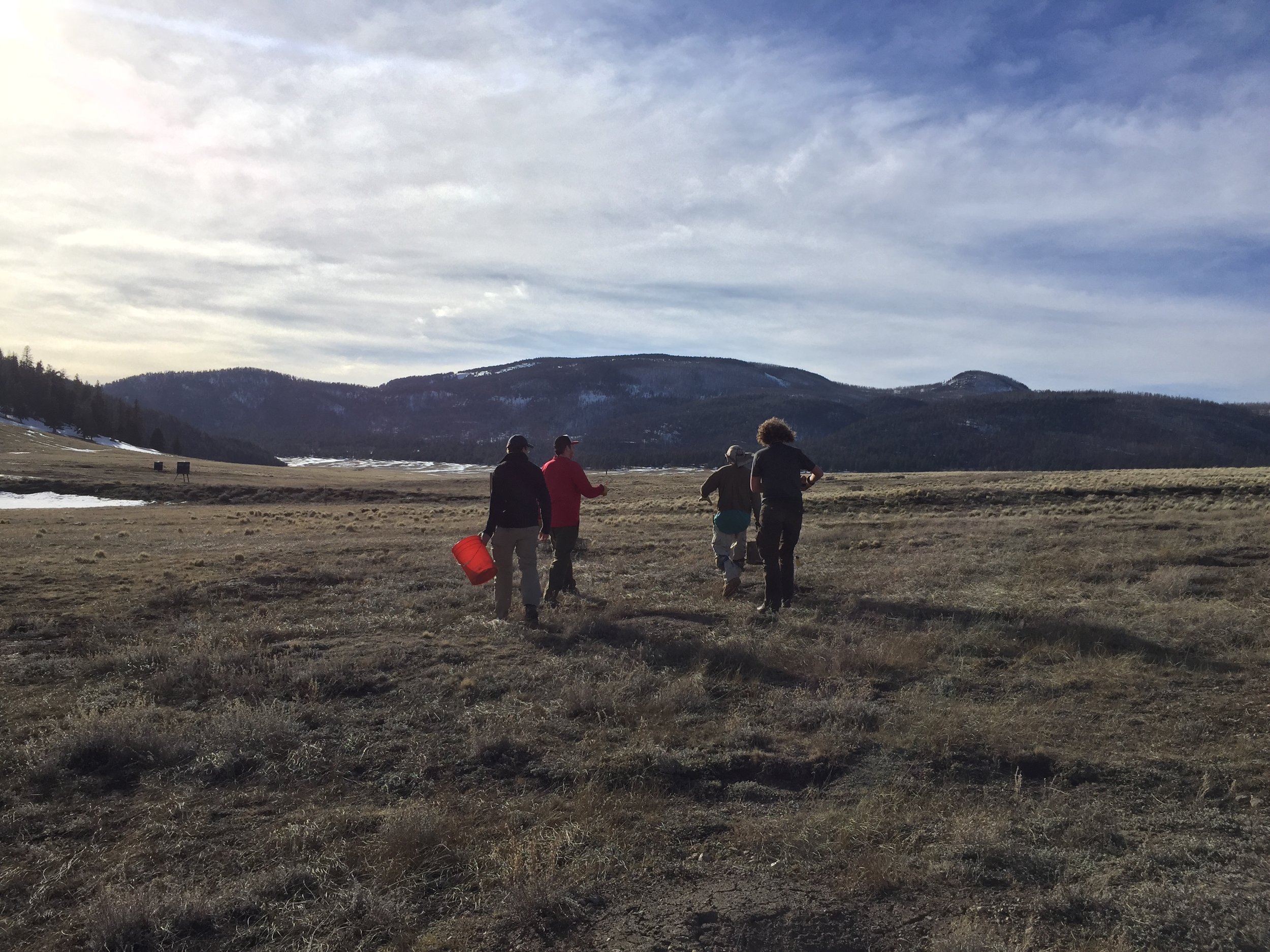
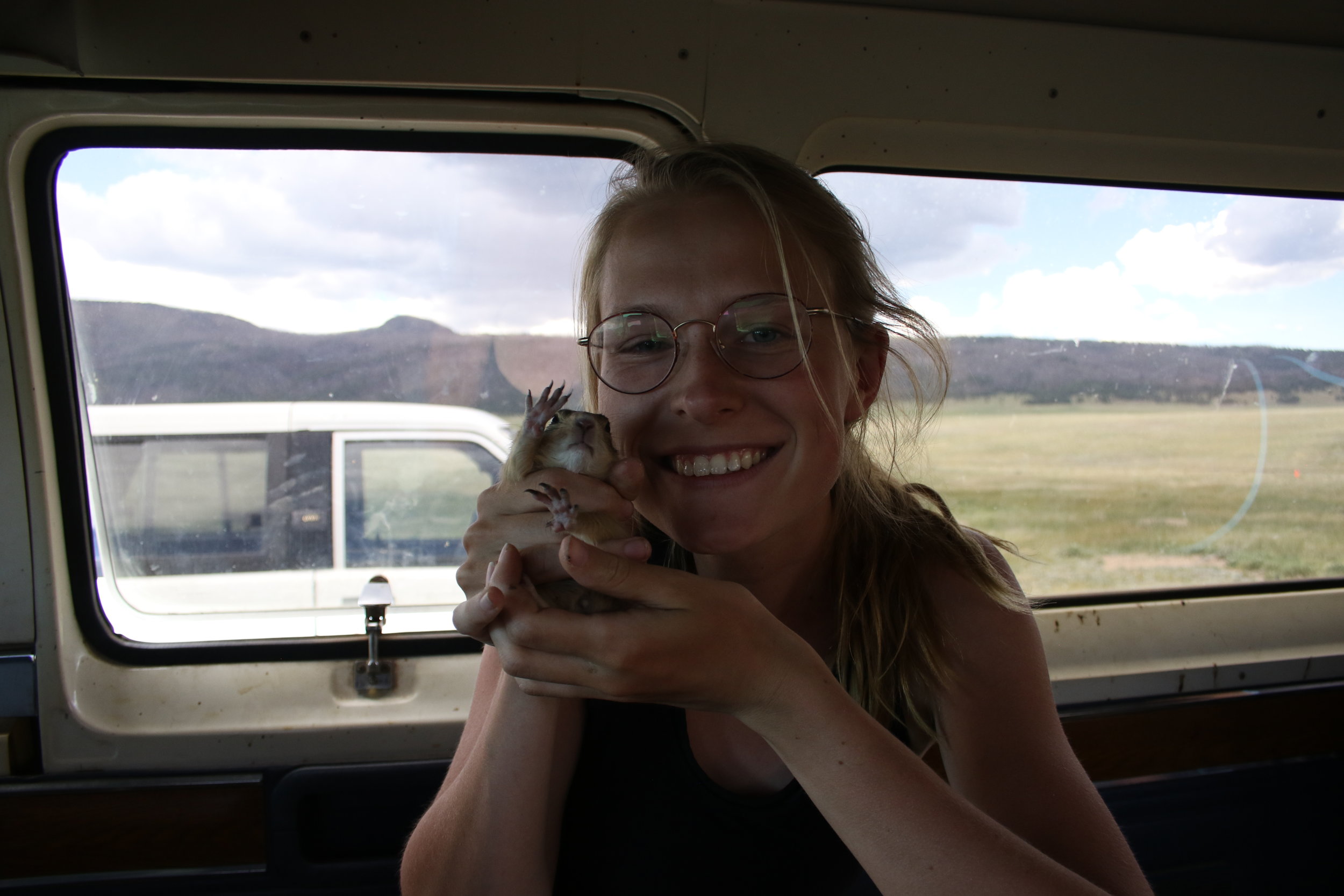
"Before joining the prairie dog squad I wanted to gain fieldwork experience, specifically in behavioral ecology. Back at UMaine I work in the Wildlife Disease Genetics Laboratory and volunteer some of my free time trapping small mammals for another professor. I learned from being a member of the prairie dog squad that I love collecting data outside just as much as inside the lab. In the future, I plan to go to graduate school, but I do not know what for yet since I enjoy learning about genetics, disease ecology, and animal behavior. I just hope someday to be as passionate about my work as John is for his. Being a part of the prairie dog squad and working alongside John was truly a once in a lifetime experience." - Carly Dickinson, PD Squad 2017
"I worked with the prairie dog squad from May to June, summer of 2017. My observation area had 18 adult prairie dogs. The team and I worked mainly on trapping prairie dogs and recording behavioral observations throughout the season. I personally witnessed some really interesting behaviors including an infanticide and multiple predations. I also observed many species interactions between the prairie dogs and got to know all of the dogs in my area very well. Working with John was an excellent experience and gave me some valuable new field work skills. I was also given the opportunity to work with two different film crews during my time in New Mexico." - Jimmy Welch, PD Squad 2017
"While it wasn't physically demanding sitting in the towers for 12 hours a day was a mental strain. But it was a once in a lifetime opportunity. I learned a lot about field research and prairie dogs." - Dennis Campbell, PD Squad 2017
"My experience working for John was incredible! Working with someone so passionate and knowledgeable was extremely rewarding. His passion for the prairie dogs through rain or shine and his enthusiasm to make his assistants better wildlife biologists made working for him a real joy! The experience with the prairie dogs was far more exciting than I ever could have imagined, getting to follow the story of the start of a new prairie dog family and working with the same individuals every day for three months makes you get really invested in your work, and really attached to your prairie dogs! The whole experience prepared me for my future work with wildlife, and gave me the ability to see that there is an epic story playing out even by our smallest critters." - Patrick Ryan, PD Squad 2017
ARE YOU A PRAIRIE DOG SQUAD ALUM? IF SO, WE WOULD LOVE TO HEAR FROM YOU!
mARIANA rIVERA rODRIGUEZ
collaborator
Mariana earned a B.S. in Wildlife Biology in 2015 from Unity College in Maine, where she studied painted turtles, black bears, mosquitoes, ticks, and small mammals. While she took immense pleasure in all species she worked with, she developed a love for rodent ecology and behavior, and completed her senior thesis on red squirrel relationships in the dense and verdant forest of south-central Maine.
Mariana joined John Hoogland's Prairie Dog Squad in 2016 and fell in love with the prairie dogs. Shortly after the 2016 field season, she had a brief but rewarding stint in Ohio working as an instructor at the Cincinnati Zoo, then returned to work with John part-time in the field for the 2017 season (taking a bit of data but principally photography). Mariana also assisted in orientation for new field assistants, liaising with film crews, and monitoring our post-plague colony at Redondo Meadows. And of course, she will be in the field with John and the Squad again for the 2018 season.
While not in the field, Mariana has been responsible for creating and maintaining this website and its blog. Ultimately, she aims to enter a graduate program in wildlife, where she hopes to further her experiences with research and eventually be able to contribute her own efforts to prairie dog research in the future.
Before her foray into wildlife work, Mariana studied Writing, earning a B.A. in English in 2008 from the University of Maryland Baltimore County, where she focused on professional communications. Designing wildlife interpretive materials is one of her passions, and allows her to meld her two favorite disciplines.
Note On Photography
We would like to make a special note on the photography and videography on the site, and thank all of the contributors for their efforts to further our understanding of prairie dogs, to showcase these animals in all their splendor and drama, and for allowing us to use their media. All photos and videos are credited, but we would like to use a bit of space here to list our contributors:
- Researcher Extraordinaire John Hoogland
- Author and Photographer Elaine Miller Bond (www.elainemillerbond.com)
- Biologist Marlin Dart
- Biologist Mariana RR
We are working on obtaining more photos, especially featuring Utah prairie dogs and black-tailed prairie dogs. If you would like to contribute photography to our site and project (with all credits of course), please contact Mariana RR at cynomys@outlook.com, or go straight to our CONTACT page. Thank you!



